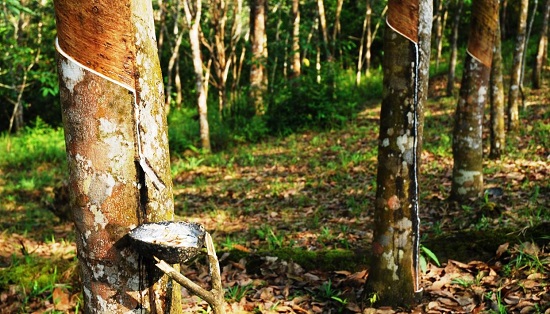Updated By: LatestGKGS Desk
Rain forest Rubber Tree Anatomy, Cultivation, Scientific Classification Details

Rubber Tree Anatomy, Biological, Ecological features, Environmental Features, Soil
The anatomy of the Para rubber tree is like most other trees. The rubber tree is a dicot, a plant whose seed has two seed leaves when it sprouts. This tree is an angiosperm which means it produces flowers.
It has round shaped leaves and flowers. It produces nuts, which are like seeds that come in a pod. Rubber trees have the same basic structure as any other plant.
It has a stem or trunk which provides a highway for nutrients and support for the plant. The leaves are used to collect sunlight to make energy through photosynthesis.
The roots absorb water and nutrients from the soil underneath the plant and provide a base or anchor so that the tree is secure in the ground.
Trees also take in carbon dioxide and transform it to release pure oxygen. Trees are important to humans because they renew our oxygen supply. As rubber trees are grown, harvested and then replaced with new rubber trees we are helping our environment.
It is the most economically important member of the genus Hevea because the milky latex extracted from the tree is the primary source of natural rubber.
Scientific Classification:-
Kingdom: Plantae
Division: Magnoliophyta
Class: Magnoliopsida
Order: Euphorbiales
Family: Euphorbiaceae
Genus: Hevea
Species: brasiliensis
